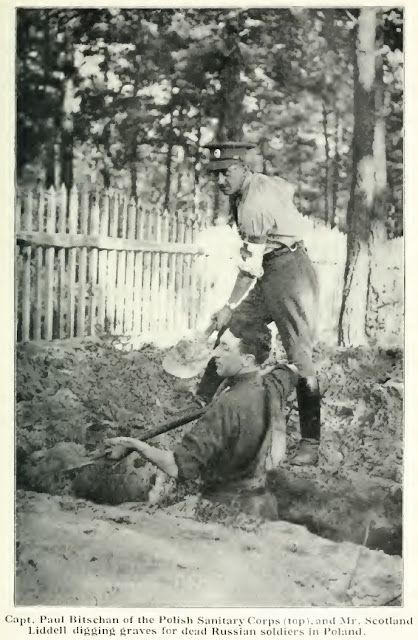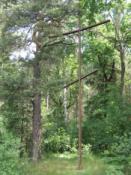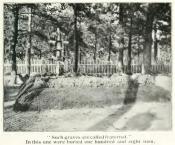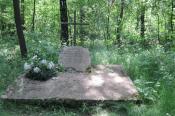 Please log in to see the coordinates.
Please log in to see the coordinates.
 Cache attributes
Cache attributes




It is probably cemetery described by Robert Scotland Liddell in "On the Russian front"
Chapter V: Staro-Radziwillow (view ebook)
For a time we had at least one death each day. We used to dig the graves ourselves. I have buried many men in tombs that I myself have made. Two of us would go off together along the railway line to the cemetery at the edge of the pine wood. We each carried a spade with us, and when we got to the graveyard we used to work to the accompaniment of a song. We would joke about a hundred things. Never did we say a word about the dead man whose grave we were digging.
When the grave was dug sufficiently deep, we would go into the wood and tear branches from the fir trees to make a bed on the wet sand at the foot. Sometimes we would strike a spring when digging and several inches of water would fill the narrow cell. We would walk back to the camp and get the body. Usually two others would help us to carry it to the cemetery. We each put a corner of a stretcher pole on our shoulder and off we'd go whistling the "Marseillaise" and other marching tunes. We would drop the body in just as it was, clothes and boots and all. Then we would work feverishly to fill the grave up. What sand and earth was left over we would make into a mound and pat it firm with our spades. Then we would put some green branches above the earth and deck the tomb. The sappers had a number of wooden crosses made. We would get a large stone and hammer one into the ground at the head of the grave and scribble a date and a name upon it.
When it was possible, a priest would come to chant the burial service and say a prayer for the departed soul. But many times we had no priest. The prayer was a joke, the anthem a comic song. It was all very weird, all very uncanny.
Wounded men arrived almost every hour, but they came in small numbers. They travelled in little trucks on a special tramway that had been made from just behind the trenches to where we were. This tramway consisted of small sections of rails and sleepers which were easily fastened together and which were laid on the fields without any previous preparation. Each truck was pulled by two horses, one at each side.
 Additional waypoints
Additional waypoints
| Symbol | Type | Coordinates | Description |
|---|---|---|---|

|
Interesting place | --- | Symboliczna mogiła pomordowanych w 1943 roku, szczątki ekshumowano w latach 50. |
 Additional hints
Additional hints
 Pictures
Pictures
 Log entries:
Log entries:
 42x
42x
 0x
0x
 0x
0x



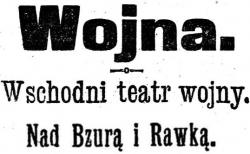

 Rated as: Good
Rated as: Good

 Description
Description
